Catapult Books
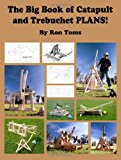
The Big Book of Catapult and Trebuchet Plans
This book is a compilation of step-by-step instructions for how to build nine different types of catapults and trebuchets, including plans for: A PVC Pipe Trebuchet, A Tabletop Trebuchet, The World Famous Floating Arm Trebuchet, The Historical WarWolf Trebuchet, A Rat-Trap Catapult, The Mangonel (or Onager), The Greek Ballista, a Petraria Arcatinus And the Scorpion II. Each set of instructions include dimensional drawings of all wooden parts, lists of required hardware and sources, an abundance of photos, diagrams and detailed descriptions of the assembly process. Additional sections include historical notes for the different types of machines, warnings and safety suggestions, tuning tips, notes on scaling, tools and techniques and additional notes on even more kinds of catapults.
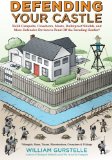
Defending Your Castle
Your home is your castle, but could it withstand an attack by Attila and the Huns, Ragnar and the Vikings, Alexander and the Greeks, Genghis Khan and the Mongols, or Tamerlane and the Tartars? Engineer William Gurstelle, author of the bestselling Backyard Ballistics, poses this fascinating question to modern-day garage warriors and shows how to build an arsenal of ancient artillery and fortifications aimed at withstanding these invading hordes. Each chapter introduces new bad actors in the history of warfare, details their conquests, and features weapons and fortifications to defend against them-culminating, by the end of the book, in a fully fortified home. Clear step-by-step instructions, diagrams, and photographs explain how to build a dozen projects from table-top models of the Cheval-de-frise, Da Vinci's Catapult, and Alexander's Tortoise to the fullsize working Carpini's Crossbow, Hour-Glass Watchtower, and Palisade Wall. With a strong emphasis on safety, this book also gives tips on troubleshooting, explains the physics behind many of the projects, and shows where to find the best materials. It's sure to be an indispensible guide for at-home defenders everywhere.
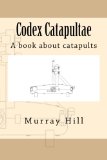
Codex Catapultae - A Book about Catapults
Codex Catapultae is the story of the history of catapults and the men who played a part in their development. It is written in plain English and intended for anyone with an interest in catapults and wants to know more.
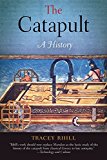
The Catapult - A History
A Major Contribution to the History of Technology and Ancient Warfare
The most recognized military device of ancient times and the source of continued fascination and popular appeal, the catapult represented a major shift in the conduct of warfare. In The Catapult: A History historian Tracey Rihll uses ancient sources and the latest archaeological findings to tell the story of this first machine of war. Dispelling any notion that the catapult was precision engineered in the modern sense, the author explains how a robust formulaic design allowed a variety of machines and missiles to be built and used for particular battlefield conditions or military tasks. Complete with original illustrations, maps, and two appendices detailing both the formulas for catapult construction and known catapult remains, The Catapult is essential reading for those interested in the history of warfare and technology.
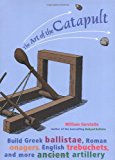
The Art of the Catapult: Build Greek Ballistae, Roman Onagers, English Trebuchets, and More Ancient Artillery
Whether playing at defending their own castle or simply chucking pumpkins over a fence, wannabe marauders and tinkerers will become fast acquainted with Ludgar, the War Wolf, Ill Neighbor, Cabulus, and the Wild Donkey-ancient artillery devices known commonly as catapults. Building these simple yet sophisticated machines introduces fundamentals of math and physics using levers, force, torsion, tension, and traction. Instructions and diagrams illustrate how to build seven authentic working model catapults, including an early Greek ballista, a Roman onager, and the apex of catapult technology, the English trebuchet. Additional projects include learning how to lash and make rope and how to construct and use a hand sling and a staff sling. The colorful history of siege warfare is explored through the stories of Alexander the Great and his battle of Tyre; Saladin, Richard the Lionheart, and the Third Crusade; pirate-turned-soldier John Crabbe and his ship-mounted catapults; and Edward I of England and his battle against the Scots at Stirling Castle.
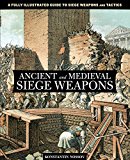
Ancient and Medieval Siege Weapons: A Fully Illustrated Guide To Siege Weapons And Tactics
In this richly illustrated guide, author Konstantin Nossov masterfully analyzes and recreates the weaponry, tactics, and stratagems of the ancient world. He offers first a comprehensive history of siege warfare in Ancient Egypt, Assyria, Judea, Persia, Greece, and Rome as well as Gaul, the Byzantine Empire, the Muslim world, and Medieval Europe. Discover, among other weapons, how scaling ladders, battering rams, borers, siege towers, throwing machines, and finally cannons developed over time. Numerous charts, illustrations, photographs, and tables explain how engineers constructed and adjusted these weapons and how warriors employed them on the battlefield. Chapters on methods of attack and defense show the weapons in action and reveal the various strategies used to implement and to overcome them. Based on an in-depth analysis of the work of ancient engineers, historians, and generals-including Apollodorus, Herodotus, Julius Caesar, Leonardo da Vinci, Livy, Plutarch, Thucydides, Vitruvius, and others- Ancient and Medieval Siege Weapons not only shows you how to recreate the siege weapons themselves but provides a deeper, clearer picture of the history of war.

Backyard Ballistics: Build Potato Cannons, Paper Match Rockets, Cincinnati Fire Kites, Tennis Ball Mortars, and More Dynamite Devices
This bestselling DIY handbook now features new and expanded projects, enabling ordinary folks to construct 16 awesome ballistic devices in their garage or basement workshops using inexpensive household or hardware store materials and this step-by-step guide. Clear instructions, diagrams, and photographs show how to build projects ranging from the simple match-powered rocket to the more complex tabletop catapult and the offbeat Cincinnati fire kite. The classic potato cannon has a new evil twin-the piezo-electric spud gun-and the electromagnetic pipe gun has joined the company of such favorites as the tennis ball mortar. With a strong emphasis on safety, the book also gives tips on troubleshooting, explains the physics behind the projects, and profiles scientists and extraordinary experimenters such as Alfred Nobel, Robert Goddard, and Isaac Newton. This book will be indispensable for the legions of backyard toy-rocket launchers and fireworks fanatics who wish every day was the fourth of July.

Mini Weapons of Mass Destruction 3: Build Siege Weapons of the Dark Ages
Utilizing easy-to-find and inexpensive materials, this handy resource teaches desktop warriors how to build a multitude of medieval siege weapons for the modern era. Novice combatants will learn to build 35 defense weapons, including a marshmallow catapult, a chopstick bow, a bottle cap crossbow, and a clothespin ballista. In addition to beefing up their Dark Age arsenal, would-be warriors are provided with a number of targets on which to practice their shooting skills. Clear diagrams, instructions, and safety tips for each project are included, making construction of each of these weapons simple, safe, and fun.
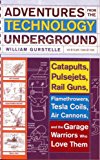
Adventures from the Technology Underground
Adventures from the Technology Underground is Gurstelle's lively and weirdly compelling report of his travels. In these pages we meet Frank Kosdon and others who draw the scrutiny of the FAA, ATF, and other federal agencies in their pursuit of high-power amateur rocketry, which they demonstrate to impressive—and sometimes explosive—effect at the annual LDRS gathering held in various remote and unpopulated areas (a necessary consideration since that acronym stands for Large Dangerous Rocket Ships). Here also are the underground technologists who turn up at the Burning Man festival in the Nevada high desert, including Lucy Hosking, “the engineer from Hell” and the creator of Satan's Calliope, aka the World's Loudest Thing, a pipe organ made from jet engines. Also at Burning Man is Austin “Dr. MegaVolt” Richard, who braves the arcing, sputtering, six-digit voltages of a giant Tesla coil in his protective metal suit. Add in a trip to see medieval-style catapults, air cannons, and supersized slingshots in action at the World Championship Punkin Chunkin competition in Sussex County, Delaware, and forays to the postapocalyptic enclaves of the flamethrower builders and the future-noir pits of the fighting robots, and you have proof positive that the age of invention is still going strong.
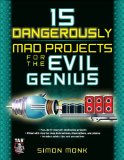
15 Dangerously Mad Projects for the Evil Genius
This wickedly inventive guide explains how to design and build 15 fiendishly fun electronics projects. Filled with photos and illustrations, 15 Dangerously Mad Projects for the Evil Genius includes step-by-step directions, as well as a construction primer for those who are new to electronics projects.
Using easy-to-find components and equipment, this do-it-yourself book shows you how to create a variety of mischievous gadgets, such as a remote-controlled laser, motorized multicolored LEDs that write in the air, and a surveillance robot. You'll also learn to use the highly popular Arduino microcontroller board with three of the projects.

Sneaky Uses for Everyday Things: How to Turn a Penny into a Radio, Make a Flood Alarm with an Aspirin, Change Milk into Plastic, Extract Water and Electricity ... a TV with Your Ring, and Other Amazing Feats
![]()
















